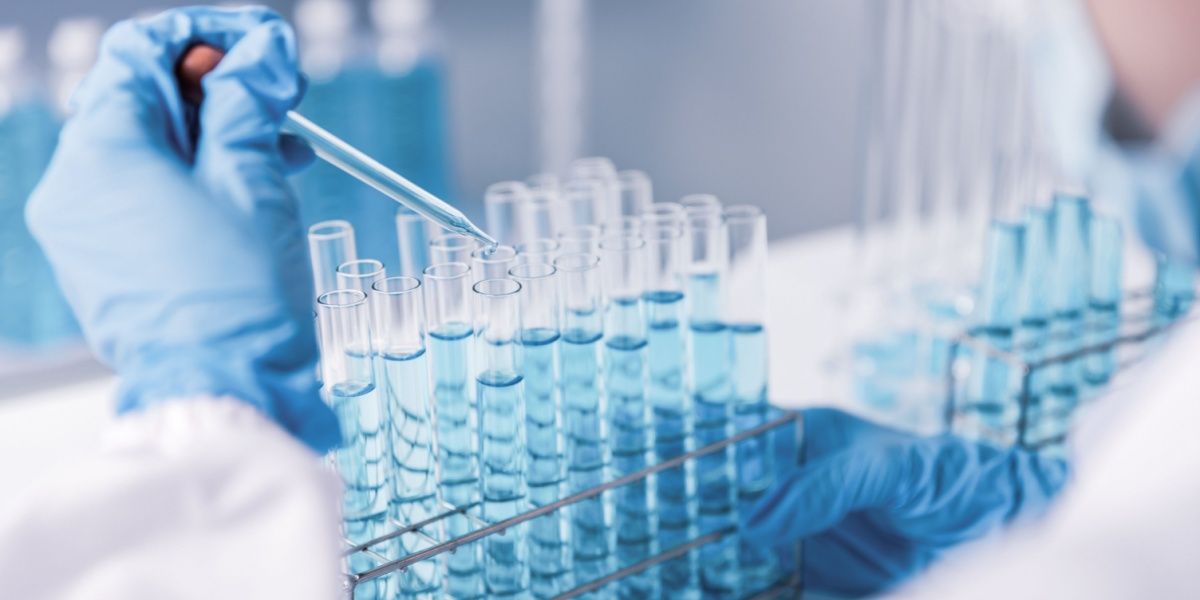Gabapentin (Neurontin) is an anticonvulsant medication commonly prescribed for epilepsy and neuropathic pain. It’s also used off-label for conditions like certain anxiety disorders and restless legs syndrome. It primarily modulates the release of specific neurotransmitters, yet many aspects of its precise mechanism remain uncertain.
Patients and healthcare providers often want to know how long gabapentin stays or can be detected in the body, either to plan medication schedules or to address possible misuse.
In this article, there will be an overview of gabapentin’s half-life, the duration of its effects, and the factors that influence its elimination. It will show how different drug tests might detect it and discover why a careful discontinuation plan is recommended for some people.
Detection times by test type
| Test type | Approximate detection window |
|---|---|
| Urine | 1–3 days (may be up to 4 days max) |
| Blood | 5–24 hours |
| Saliva | 1–2 days |
| Hair | Up to 90 days |
(Detection windows are approximate and can vary based on individual factors.)
- Gabapentin's elimination half-life is 5–7 hours in healthy adults, meaning the body clears most of a dose within about 48 hours.
- Standard drug panels usually don’t include testing for gabapentin, yet specialized screens can identify it if necessary.
- A supervised taper is the safest option for those who need to stop taking gabapentin, particularly when it has been used regularly for extended periods.

How long does gabapentin stay in your system?
When gabapentin is used as directed in people with healthy kidney function, most of it is eliminated within about two days. [1] Gabapentin undergoes very little, if any, clinically significant metabolism via the liver. Most of it is excreted unchanged by the kidneys, so normal kidney function is important for efficient clearance of gabapentin. [2] Thus, for people with compromised kidney function, gabapentin will stay in their system for a longer period.
Although gabapentin is not included in typical drug panels, specialized tests can detect it for at least 48 hours after taking it.
Gabapentin half-life: Metabolism and elimination
A half-life is the amount of time it takes for the concentration of a drug in the body to decrease by 50%. It helps determine how long a drug’s effects last, how often it should be taken, and how long it stays in the system, helping to evaluate for clinical factors such as redosing, withdrawal, or drug testing.
Gabapentin’s half-life averages 5–7 hours among people with healthy renal function. Because it undergoes minimal liver metabolism, kidney function becomes the primary factor in the rate in which gabapentin is eliminated by the body. [2]
Typical stages of elimination include:
- Absorption in the gastrointestinal tract: Gabapentin is absorbed via an amino acid transporter in the small intestine. [3]
- Peak concentration: Blood levels peak around 2–3 hours after ingestion. [1]
- Renal excretion: Nearly all gabapentin is removed by the kidneys. [2]
The elimination rate is directly proportional to kidney function—a person with normal kidney function will clear gabapentin within the normal range, whereas a person with impaired kidney function will eliminate gabapentin at a slower rate.
How long gabapentin effects last
For many people who take gabapentin, it starts working within 1–2 hours, although the onset can be slightly delayed if taken with food. The peak of its therapeutic effect is about 2–4 hours after a dose. [4] Gabapentin’s duration of action is about 6–8 hours after a dose. [4]
Because its effects last for 6–8 hours, in order to maintain optimal symptom control, the drug needs to be taken multiple times per day. Usually, it is prescribed three times daily, and in some cases, it may be prescribed four times daily. [4]
Note: Gabapentin starts acting in the body relatively quickly (within a few hours), but for conditions like neuropathic pain, anxiety, or mood-related disorders, its full therapeutic benefits usually become evident only after consistent use over days or weeks. [5] This gradual onset of action is consistent with how antidepressants work. Sustained administration leads to adaptive changes in the nervous system over time rather than immediate symptomatic relief. Nonetheless, on a per-dose basis, you can expect a gabapentin capsule to do its job for up to 8 hours, which aligns with the typical dosing schedule of three times daily.
Gabapentin detection by testing method
Many standard five- and twelve-panel drug tests do not include gabapentin. While it is considered a controlled substance in some states, it is less commonly a drug of abuse. Nevertheless, gabapentin is usually prescribed in the form of capsules, as tablets can be crushed and added to other drugs.
In some cases, concerns about potential misuse or not taking the medication as prescribed may necessitate using specialized screening methods. [6] If there is a specific reason to test for gabapentin, for example, a doctor monitoring medication compliance or a toxicology investigation, specialized tests can be used to detect it. The detection window differs between various types of samples.
How long it stays in urine
Urine testing is the most common method used to detect gabapentin. In urine, gabapentin can be detected for roughly 1–4 days after the last dose in most healthy people. [7] Once again, kidney function plays an important role; if the kidneys are compromised, the drug may remain detectable even longer. Medical professionals sometimes order urine screenings to confirm that patients are taking gabapentin as prescribed or to rule out undisclosed use.
How long it stays in blood
Blood tests for drugs are less common outside of hospital settings, and gabapentin’s short half-life makes the detection window in the blood relatively brief. Limited published research on how long gabapentin remains detectable in blood exists, but clinical and rehab sources generally report a window of 5–24 hours. This estimate is based on gabapentin’s short half-life and common practices in hospital toxicology testing.
Blood testing for gabapentin might be done in cases of suspected overdose or to confirm levels in a medical setting.
How long it stays in saliva
Saliva testing for drugs is a convenient, noninvasive method, but it’s not commonly used for gabapentin. It can be detected in saliva for up to two days. [7] Results may be incongruent because saliva tests can be easily influenced by recent food or drink consumption.
How long it stays in hair
Hair follicle testing can detect most substances for up to 90 days or longer. Gabapentin can be detected in hair up to 90 days after use. [8] This approach, however, is not as frequently employed for gabapentin as it is for other substances, like opioids or amphetamines. Hair testing is usually only done in high-level legal or workplace investigations that require an extended look-back period.
Factors affecting gabapentin clearance
Several factors can influence how quickly or slowly gabapentin is eliminated from the body. While the average half-life is 5–7 hours in typical conditions, real-world elimination can be faster or slower depending on individual differences. Here are the main factors that affect gabapentin clearance: [1][2]
- Kidney function: By far, the most critical factor is kidney function. Since gabapentin is cleared almost entirely by the kidneys, any impairment can significantly extend its half-life.
- Age: Older adults often have reduced kidney efficiency. Research shows that gabapentin clearance decreases as age increases, correlating with the typical age-related decline in glomerular filtration rate.
- Dosage and frequency: The amount and frequency of gabapentin dosing can influence detectable levels.
- Body weight and hydration: Body composition can have minor effects on gabapentin clearance.
- Concurrent medications: Medications or supplements that alter kidney function or blood flow affect gabapentin excretion.
- Formulation: Extended-release gabapentin (gabapentin enacarbil or Horizant) has a different release profile. It doesn’t change gabapentin’s half-life, but it spreads the absorption over a longer period, effectively keeping blood levels more sustained. This might make the drug appear in the system a bit longer after each dose (because its release continues over a longer time).
Kidney impairment and dialysis
Because kidney function is so critical for gabapentin clearance, it’s worth noting the elimination time for people with renal impairment or those on dialysis:
- Chronic kidney disease (CKD): Gabapentin can accumulate in patients who have CKD unless doses are reduced. While its half-life is around 5–7 hours with normal kidney function, it can exceed 50 hours in severe kidney impairment. [2]
- End-stage renal disease (ESRD) without dialysis: In a person who has virtually no kidney function (anuric patients) and who is not on dialysis, gabapentin’s half-life can be significantly prolonged. One study reported an apparent half-life of around 132 hours (5.5 days) in anuric patients who do not receive dialysis. [2]
- Hemodialysis: Hemodialysis removes gabapentin from the bloodstream. Dialysis acts as an artificial kidney, filtering out the drug. This means that a significant portion of gabapentin in the body is cleared with each dialysis session. Patients on routine dialysis who take gabapentin often receive supplemental doses post-dialysis to replace what was lost during the treatment. [2]
Concerns about gabapentin misuse and safe discontinuation
Unlike opioids, gabapentin is not traditionally seen as being addictive. While gabapentin is not federally classified as a controlled substance, some states have reclassified it as a Schedule V controlled substance due to concerns about its potential for misuse, as noted in various studies. [9]
Some reports suggest gabapentin may be used for euphoria, augmenting the high from opiates, reducing alcohol cravings, providing a cocaine-like high, or providing sedation or sleep. [10] However, studies and surveys indicate that gabapentin misuse is relatively uncommon in the general population (around 1% of people prescribed it, according to one survey). [11]
Nonetheless, stopping gabapentin abruptly can lead to withdrawal symptoms, some of which can be serious. Acute withdrawal can produce symptoms such as restlessness, insomnia, and anxiety. [12]
A medically supervised taper is the safest route, allowing the nervous system time to adjust. Some patients also benefit from short-term counseling or support groups if they have misused gabapentin. [12]

-person-thumbnail.jpg?v=1758880627)
-guide-detail.jpg?v=1722501565)

